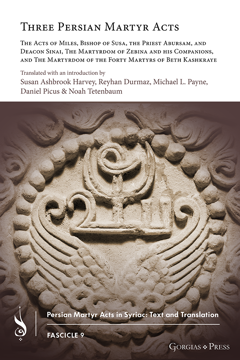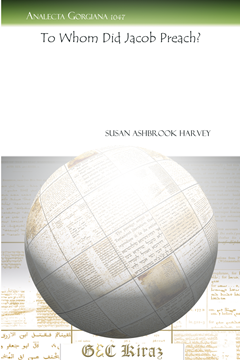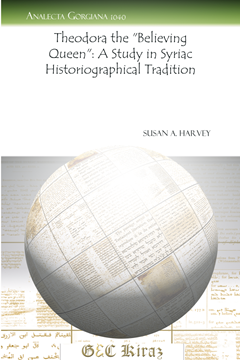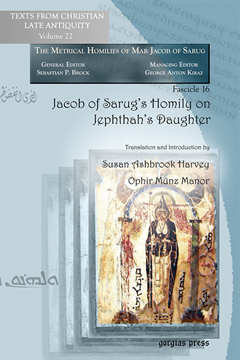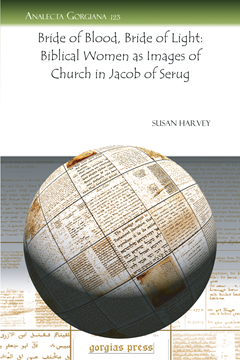Susan Ashbrook Harvey

Susan Ashbrook Harvey is the Willard Prescott and Annie McClelland Smith Professor of Religious Studies at Brown University. She has published extensively on Syriac and Byzantine Christianity, and has a particular interest in women and their representation in ancient Christianity.
Three Persian Martyr Acts
The Acts of Miles, Bishop of Susa, the Priest Abursam, and Deacon Sinai, The Martyrdom of Zebina and his Companions, and The Martyrdom of the Forty Martyrs of Beth Kashkraye
Edited with an Introduction by Susan Ashbrook Harvey, Professor Reyhan Durmaz, Michael L. Payne, Prof. Daniel Picus & Noah Tetenbaum
ISBN: 978-1-4632-4561-0
This volume brings together the texts and translations for three Syriac martyr acts, set in Sasanian Persia during the reign of Shapur II (309-379 CE). These texts offer compelling witness to the challenges of a community’s need to honor memory and experience, and evidence towards the formation and sustenance of Christian identity in the midst of Persian society and culture.
$74.00 (USD) $44.40 (USD)
Jacob of Sarug's Homilies on Women Whom Jesus Met
Edited and Translated by Susan Ashbrook Harvey, Sebastian P. Brock, Professor Reyhan Durmaz, Rebecca Stephens Falcasantos, Michael L. Payne & Prof. Daniel Picus
Series: Texts from Christian Late Antiquity 44
ISBN: 978-1-4632-0580-5
Five homilies by Jacob of Sarug on women whom Jesus met: the Canaanite Woman, the Samaritan Woman, the Hemorrhaging Woman, the Woman Bent Double, and Jairus' Daughter.
$37.00 (USD) $22.20 (USD)
To Whom Did Jacob Preach?
Series: Analecta Gorgiana 1047
ISBN: 978-1-4632-0095-4
The long career of Jacob of Serugh provides insights into Scripture and tradition expected by homilies as well as information about his audience. In this publication, Harvey discusses Jacob of Serugh’s concern for congregations to balance lifestyle and devotional obligations.
$34.00 (USD) $20.40 (USD)
A Study in Syriac Historiographical Tradition
Series: Analecta Gorgiana 1040
ISBN: 978-1-4632-0088-6
Syriac tradition remembers sixth century Byzantine emperor Justinian I as the harsh persecutor of the faithful, while his wife Theodora is revered as the “believing queen”, champion and protectress of the dissenting non-Chalcedonian church.
$36.00 (USD) $21.60 (USD)
Jacob of Sarug’s Homily on Jephthah’s Daughter
Metrical Homilies of Mar Jacob of Sarug
Translation and Introduction by Susan Ashbrook Harvey & Ophir Münz-Manor
Series: Texts from Christian Late Antiquity 22
ISBN: 978-1-60724-071-6
This edition of Mar Jacob of Sarug's (d. 521) homily on Jephthah’s daughter invisages this single, virginal female as a prefiguration of Christ. Jacob also discusses the history of blood sacrifice and on the qualities that render Jephthah’s action priestly. The volume constitutes a fascicle of The Metrical Homilies of Mar Jacob of Sarug, which, when complete, will contain the original Syriac text of Jacob's surviving sermons, fully vocalized, alongside an annotated English translation.
$34.00 (USD) $20.40 (USD)
Biblical Women as Images of Church in Jacob of Serug
Series: Analecta Gorgiana 123
ISBN: 978-1-60724-050-1
This study seeks to address the common bridal imagery pervasive in ancient Syriac Christianity by asking how Jacob of Serug employed the presentation of biblical women in his homilies to serve as imagery for the Church.
$37.00 (USD) $22.20 (USD)

